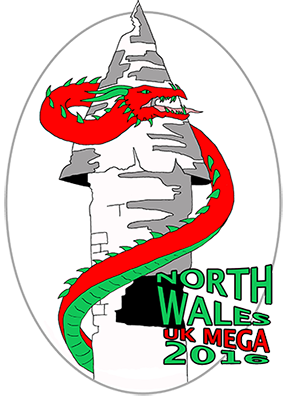General Information and Warnings
Here at Cwmorthin you will find a stunning glacial valley but geologically it can be confusing due to the vast amounts of slate mining and surface quarrying that have taken place here. The earthcaches on this trail focus on both the original glacial features of the valley, and also the interesting slate that has been exposed from underground by the workings. Always remember that the huge piles of slate you will frequently walk over and past were not placed here naturally, this is all the work of man. As you walk around, try and keep an image in your mind of how the valley would have looked before the slate was quarried.
Our earthcache trail keeps to the tracks around the old quarry and mine areas. The mines are extensive and should all be gated and locked. The mines were abandoned because they were too unsafe to work. It is not recommended to climb the spoil heaps or explore away from the paths as there could be hidden dangers, and it’s not recommended to let children or pets run off unsupervised. Also be aware that slate can have a very sharp edge and can cut very deeply, so please treat this area with the respect it requires.
Information about Glacial Corries and Lakes
Corries, also known as cwms or cirques, are often the starting point of a glacier.
Snowflakes collect in a hollow. As more snow falls, the snow is compressed and the air is squeezed out to become firn or neve. Neve is a young, granular type of snow which has been partially melted, refrozen and compacted. Firn is a type of snow that has been left over from past seasons and has been recrystallized into a substance denser than névé. With the pressure of more layers of snow, the firn will, over thousands of years, become glacier ice. Erosion and weathering by abrasion, plucking and freeze-thaw action will gradually make the hollow bigger.
Even though the ice is trapped in a hollow and unable to move down hill, gravity will still encourage it to move. This circular motion is known as rotational slip and can cause the ice to pull away from the back wall creating a crevasse or bergschrund. Plucked debris from the back wall causes further erosion through abrasion which deepens the corrie.

Is this what you can see here?
View the body of water in front of you - Llyn Cwmorthin. There was always a lake here, as there is a natural rock bar holding back the water. The quarrymen raised the level of the barrier to create a bigger lake, and the size and depth of the original lake is unknown. But was this original lake ever a corrie?
If it was originally a corrie, we would still see the following evidence.
- A noticeable lip, clearly higher than the level of water in the corrie (remember, the level has been raised by the dam)
- The valley around the corrie would be rounded, with a steep back wall that gives the appearance of the valley being an armchair
- The water would be extremely deep in the middle
If it was originally a valley created by a glacier with an ordinary lake, we would see the following evidence.
- A long valley, not necessarily straight, carved by a glacier on the move
- The sides of the valley may be higher than the back wall
- The lake would sit on the flat valley bottom, and would not be particularly deep
Be aware the changes man has made around the valley entrance/exit could be misleading, but you must try to imagine what the valley would have looked like before the slate quarrying took place.
Logging Requirements (Questions to Answer)
Please e-mail me the answer to the questions via my profile. I do read all answers and try to reply to them all; I may not reply immediately so please do not wait for a reply before posting your find. Ideally, please send your answers at the same time you submit your log, or within a few days of your visit. I do check answers have been sent for every log, if you do not send answers within a week your log may be deleted. You are not expected to have any previous geological knowledge, your best attempt at the answers is all that is required.
1. In the information above, there are bullet points of things to look out for when identifying a glacial corrie and a glacial lake. Please tell me which bits of evidence you have observed here.
2. Having considered the details in the listing and your observations above, do you think the body of water in front of you was originally a glacial corrie or is it simply a lake in a valley?
3.There was always a body of water here, but we know the quarry owners made it bigger with their dam. Looking at the height of the dam, how much more surface area do you estimate the lake might now cover? A percentage is all that is required.
We always like to see photographs of you and/or your GPS device with the geological features - plus this also provides additional proof of your visit, so please include one with your log if you wish.
This cache has been produced especially for the
